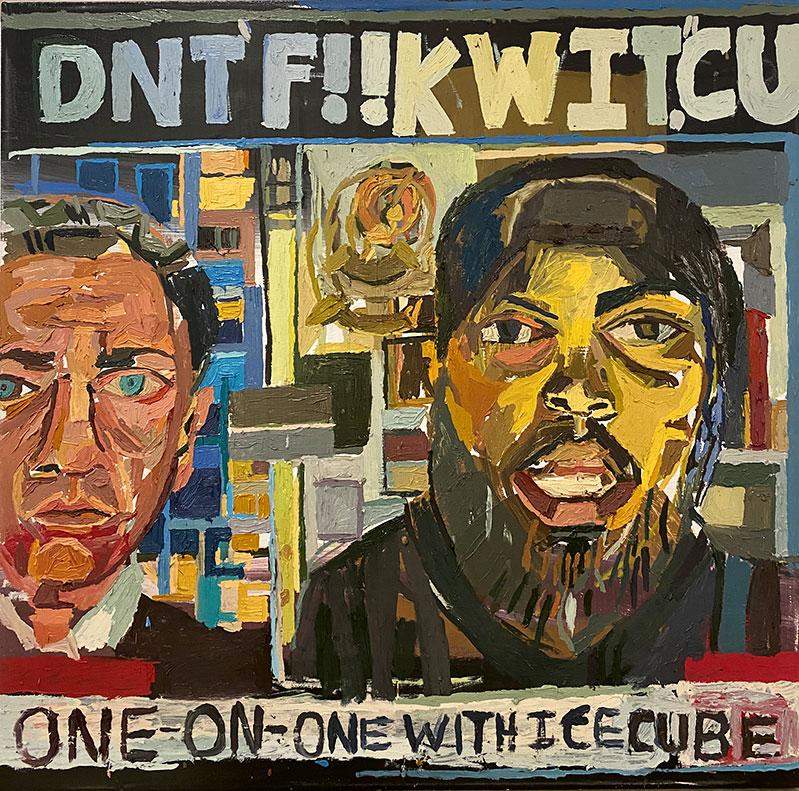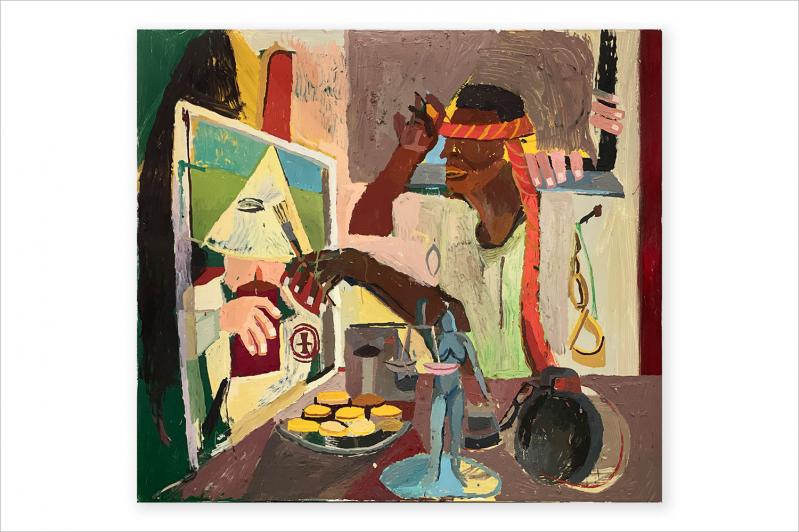Last year took its toll on many levels. Emotions ran high with the pandemic, the election, and demonstrations of all kinds but mostly against excessive and deadly force used by law enforcement in encounters with people of color.
In such an environment, it might be understandable why four museums retreated from plans to show a Philip Guston retrospective that included paintings the white artist completed in the late 1960s and early 1970s with Ku Klux Klan-inspired hooded figures as their subjects. The four venues, the National Gallery of Art in Washington, the Museum of Fine Arts, Houston, the Tate Modern in London, and the Museum of Fine Arts, Boston, cited the pandemic as the initial rationale. Nonetheless, they eventually pushed the exhibition much further out, to 2024, stating that they wanted more time to bring in "additional perspectives and voices to shape how we present" the work.
With some museums, such as the Whitney Museum of American Art, having encountered protests and censure for displaying art that misfired in its attempts to spark dialog, the museums' administrations showed reluctance to offend or incite similar protests. Instead, the postponement ignited its own controversy in the art world. Glenn Ligon and Trenton Doyle Hancock, artists who are Black, each wrote essays for the original exhibition catalog addressing the series and Guston's intentions for it. They were also critical of the move.
Clintel Steed is one of more than 2,000 artists who have pushed back on the extended delay of "Philip Guston Now." His new series "Behind the Hood," on view at the Mark Borghi gallery in Sag Harbor, presents his own take on the subject matter, informed by the artist's experiences of systemic racism as a child in Utah in the 1980s and 1990s that culminated in the death of his brother after being shot by police.

Mr. Steed chose to produce 24 paintings to honor the number of Guston's Klansmen works in the retrospective, muffled in the conversation about race and institutionalized oppression. While Guston's first efforts to address this theme started in the 1930s, Mr. Steed reaches back into the 19th century to plot a timeline of persecution and brutality.
As a painter, he is well suited to the task of responding to Guston, sharing a predilection for thickly applied paint that he makes an even denser impasto. Viewers may remember Mr. Steed's mural-sized "The Temptations of St. Anthony," which was on view at this location and at Borghi's Bridgehampton space during the past two summers. It was part of a series of personalized takes on famous historical narrative subjects in the grand European tradition.
These canvases are smaller, mostly easel-sized, ranging around 18 by 12 inches, with a couple more that are three feet square. The intimate size allows the raw bluntness of the subjects and objects depicted to dominate the space.
In notes about "City Limits," their own Guston Klansman painting, the Museum of Modern Art quotes from the artist: " 'They are self-portraits,' he reflected. 'I perceive myself as being behind the hood. . . . The idea of evil fascinated me. . . . I almost tried to imagine that I was living with the Klan. What would it be like to be evil?' " He even rendered himself at the easel in a Klan hood in one of those paintings to underline the point.
The 1930s figures have full bodies with robe and hood. In the later works, the hood stands for the whole and the cone-like structure seems at times solidly robotic or more phantom-like, a cartoon ghost.
Mr. Steed opts for a variety of interpretations, sometimes hood solely representing a head, other times more. Guston's figures were portrayed with their own big hands, smoking, painting, or driving. When Mr. Steed portrays appendages with his hoods, they might be considered part of the hood's body, as in "2 Hood 1 Tongue 1 Hand," or engaged in eating the hands of slaves, as in "Hood Eating Slave Hands." They are often eating in a rapacious manner.
The artist isn't focused on hoods exclusively. Some of the compositions are concerned with rope as nooses, or to bind, as in "Entanglement." He touches on cotton farming in the prolonged role of slave labor in the Southern economy and the resistance of greedy plantation owners to give up the barbaric practice. A dark hand rises out of a basket of the harvest in "Hand and Cotton." In "Hood, Candle, and Cotton," the oppression is palpable and frightening.
Mr. Steed's paint application is literally and emotionally heavy. The expressionistic style of the representation seems to come from a place more intuitive than not. His use of disembodied brains in a few works, where the brain exists outside the hood and can appear at times to resemble clenched fists, is open to interpretation past its more obvious overtones. Over all, the show is most satisfying when it hits you like a gut punch.
"The Final Piece," executed this year, as opposed to the others, which were completed in 2020, closes out the series. In it, he portrays himself much like Guston at his easel and painting a Klansman. Instead of a hood, the artist appears blindfolded by a thick rope bound around his eyes. A plate of cotton, a Justice figure holding scales, a ball and chain, and some other restraints surround him on a table and on the back wall of the room, where a collection of possibly severed fingers line up along a windowpane.
Given Guston's predilection for portraying hands and figures, it's hard not to want to see it as him, boosting himself up to get a closer look at this later artist's interpretation of his own earlier aims, both pioneering and often misunderstood.
The exhibition is on view through March 5.




